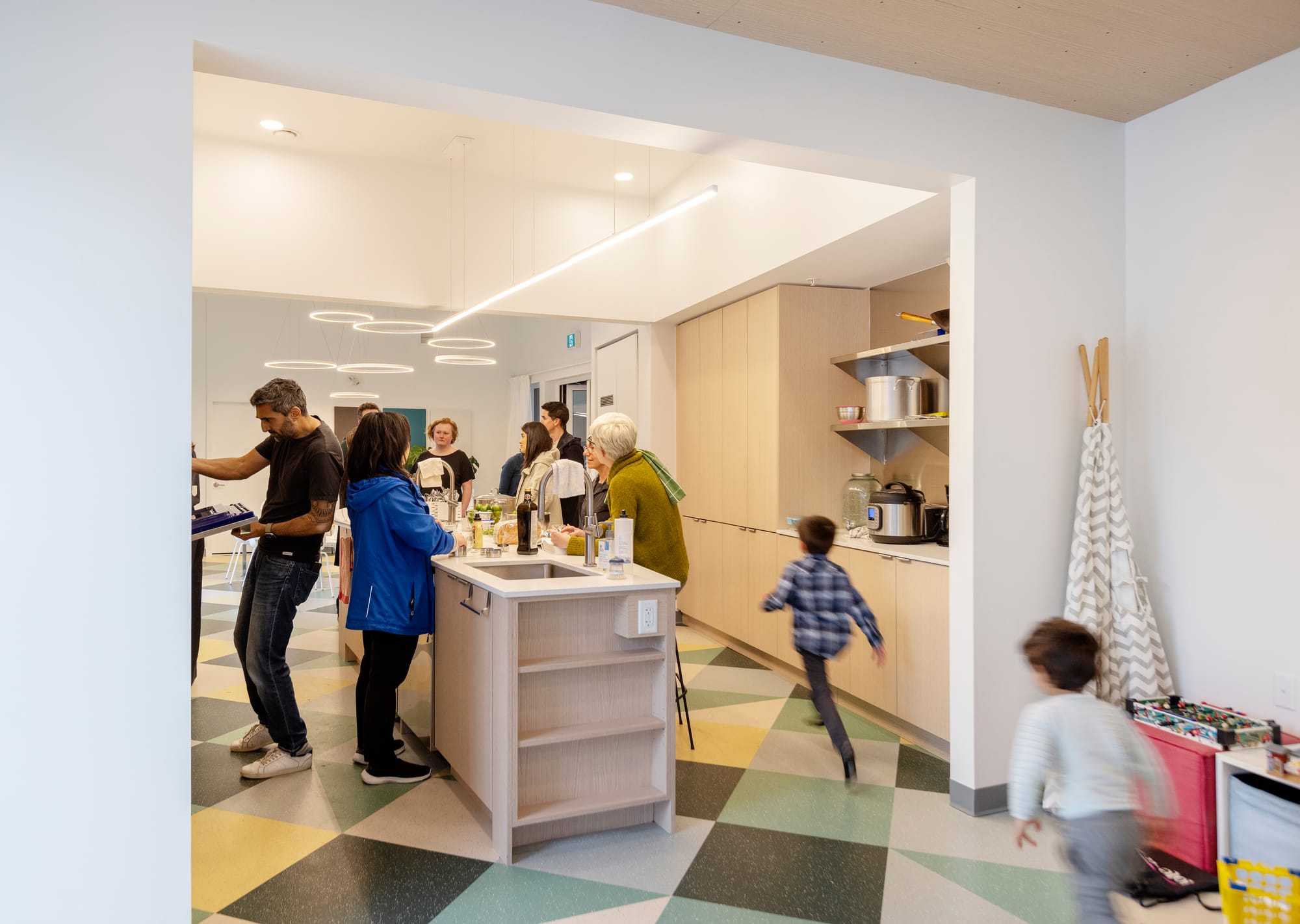
Designing for Sociability
Happy City has gathered evidence on the relationship between design and social connections in multi-family housing. Building on this work, Tomo applies the following design guidelines for sociability:
- Keep social group size smaller. Clusters of housing featuring 8 to 15 units in walkable, transit-served neighbourhoods are ideal for nurturing supportive social connections.
- Invite people to do things together. When people self-organize to work on causes that are greater than themselves, they feel happier and more connected to one another.
- Enable a social gradient from public to private spaces. Delineating a gradient of communal, family, and personal spaces provides sense of control, invites participation, and creates feeling of safety.
- Spark frequent informal encounters. Positive relationships need purposeful social contact; however, informal, unscheduled encounters with neighbours nurture trust and sense of belonging.
- Integrate with nature. People’s ability to experience nature with all their senses is strongly linked to positive relationships and social trust.
- Lengthen housing tenure. Residents who are able to live in the same place longer, either as owners or renters, build stronger bonds of trust and social connection.
In the spring of 2024, Happy Cities published its key learnings from this cohousing lite community, exploring how cities can add gentle density and grow in a sustainable and social way. Read the report here.
